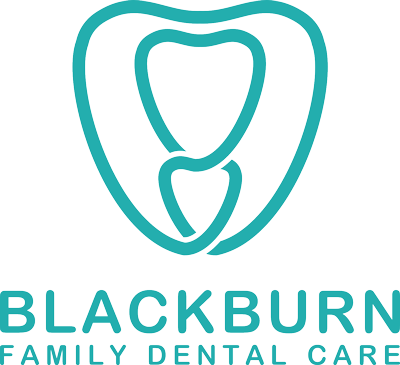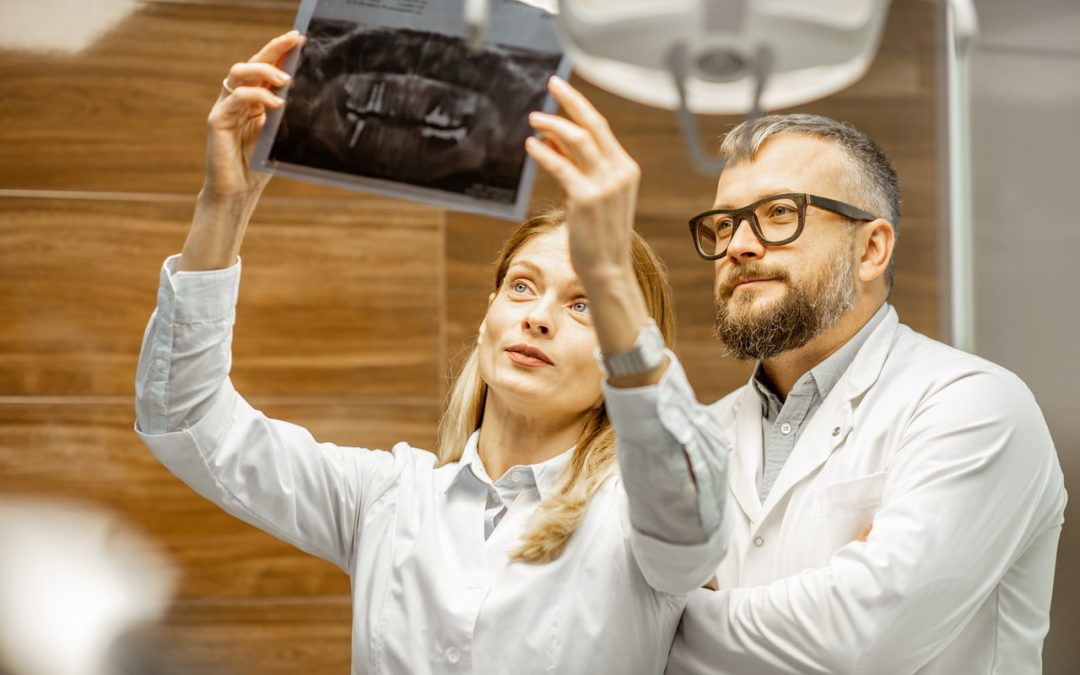Dental X-rays are often requested by the dentist at your initial consultation and in some at some recare appointments. Understandably there are some misconceptions and unreasonable fears in regard to dental xrays circulating in the media and in the general population.
Dental x-rays have definitely come along way with recent technology. Gone are the days where the dentist had to develop xray films in a developer, fixer solution under a dark box and wait for the xrays to develop after getting washed.
With current technology xrays sensors have evolved to become more sensitive and to require less radiation to achieve an image that is clinically useable to diagnose dental issues. Typically radiation required is 1/5 of the normal dose that was once required. One bitewing exposure is typically 0.001 msV. To put things in perspective 4 of these small bitewings would equate to 0.001msV would be less than your daily background radiation.
Read on for more information on dental X-ray scans, who needs them, how frequent you should expect to have them and a further discussion about the safety of dental X-ray procedures.
What Are Dental X-Rays?
Dental X-rays (also known as dental radiography) are images of your teeth that your dentist will use to assess and evaluate your oral health. These X-rays use low-level radiation to capture the interior of your teeth and gums, and they help diagnose conditions with your gums or teeth beneath the gum line that would otherwise be difficult to detect on a clinical examination purely by vision and tactile sensation. One such example is decay that can develop between teeth can be easily missed on a routine examination as the surfaces where you floss are not visible.
Who Needs Dental X-Rays?
During annual dental health check-ups, your dentist may perform a dental X-ray to have a better understanding of your teeth at the current time. However, you can discuss with your dentist whether or not a dental X-ray is strictly necessary if your dentist finds you to have good oral health overall.
Dental X-rays are more likely to be taken if you have a dental problem. Following a preliminary visual examination of your teeth, your dentist may recommend a dental X-ray to better detect potential tooth decay or disease.
Patient situations where you will need dental X-rays include:
- Children and adolescents. As their teeth and jaws are still developing with a change from deciduous teeth to permanent teeth, children and adolescents do require xrays to detect problems early. Baby teeth typically are have larger pulp chambers which means that it is much faster for decay to spread and infect the vital structures of the tooth (ie the nerve and the vessels). Further more children can often have sweeter diets and snacks and may lack in proper oral hygiene skills. In the normal eruption pattern some baby teeth remain in the mouth for as long as age 12-13 before the adult successor comes through. A loss of a baby tooth earlier due to dental decay may result in a shift of adjacent teeth resulting in adult teeth erupting in different differently and causing malocclusions.
- Oral conditions. This can range from tooth decay to periodontal (gum) disease. Dental X-rays can help to identify cavities and monitor bone loss. Smaller dental xrays like bitewings or periapicals are often recommended by dentist iniitally for the first dental visit. Firstly to detect dental disease and secondly as a baseline image to compare against future xrays.
- Emergency visits. Dental xrays are an important diagnostic investigation tool to help dentists diagnose where the the pain and/or infection is coming from. They are also routinely used to identify where cracks have occured in traumatised teeth.
- Specialised dental xrays. If you’re looking into more specialised dental procedures such as Dental implants , wisdom teeth or need teeth straightening work done, your dentist will often first need to assess your teeth via more specialised dental X-rays. Xrays for this kind of work is more specific to the procedure and is different from the routine smaller “bitewing” xrays normally done in a dental recare or checkup appaointment. An OPG is a large dental xray that covers the full mouth and jaws of the individual, it is useful to screen the bone levels for gum disease; assess the proximity of vital structures such as nerves and sinuses in relation to wisdom teeth and also is a good overall screen for pathologies which can occur in the jaws. A lateral cephalometric xray is a specialised xray that is used to assess the relationship between the upper and lower jaws in relation to the base of the skull. It typically also gives important information such as the respective lengths and positions of the jaws and also the direction of growth. This allows the dentist to plan for the appropriate treatment when treatment planning for braces or aligner therapy. A CBCT otherwise known as a cone beam computer tomography xray is a 3d xray utlised to map a 3d image of the jaws. It is especially helpful in planning dental implants, but has also applications in other aspects of dentistry such as endodontics (root canal therapy) and also orthodontics (teeth straightening) to some extent.
How Often Do You Need Dental X-Rays?
At Blackburn Family Dental care, we try to practise the ALARA principle (As low as radiagraphically attainable). There is usually a indication for a dental xray. If you’re visiting us for the first time and dont have any recent dental X-rays from your previous dentists, your new dentist may recommend a set of baseline dental X-rays so they can better assess the state of your oral health and have something to compare to in future visits.
On a more regular basis, the factors that determine how often you will need a dental X-ray to include your risk of dental disease. Risk of decay is determined by a number of factors assessed by your dentist. Some of these factors are: how many decay you have and also the number of existing fillings; access to fluoridated water/fluorides; access to dental care; salivary flow, oral hygiene, diet or change in diet and frequency of snacking/eating.
For example, if your teeth are generally kept in good condition, you havent had any dental disease in the past 2-3 years, you may not require an X-ray every time you visit the dentist for a routine check-up. Frequency of each subsequent xray may be alot longer ie 2-3 years. However, if you have a history of cavities and have had lots of fillings in the past, your dentist may recommend that you have more frequent X-rays done. This might range from every 6 months to yearly.
How Safe Are Dental X-Rays?
While it is true that cumulative amounts of ionising radiation may be harmful to your health, a dental X-ray exposes you to a relatively low dose of radiation, which in turn has fairly minimal and negligible effects on your health.
In fact, you often receive more radiation over a year from various sources (such as the sun, minerals in the soil, and electrical appliances) in your everyday life than from an occasional dental X-ray. There is also significant background radiation everytime you take a trip on an aeroplane.
However, rest assured that getting a dental X-ray is a perfectly safe procedure, and the potential benefits of a dental X-ray on your oral health often outweigh the adverse effects. There have also been significant technological advancements that have helped improve the safety levels of the procedure, such as the switch from traditional film to digital X-rays. The use of a collimator also reduces the scatter radiation by focusing the exposure only where it matters.
Furthermore, your dentist will make every effort to reduce your radiation exposure from dental X-rays, such as limiting the number of X-rays taken, lowering the radiation settings for younger patients, and providing a lead apron/thyroid collar to protect the rest of your body from radiation exposure.
Can Pregnant Women Get Dental X-Rays?
ARPANZA guidelines mention that there is no contraindications to dental xrays to pregnant patients. However just as an additional precaution, the dentist generally do not recommend getting a dental X-ray if you are pregnant unless totally necssary (for instance in a dental emergency). While you can have regular dental check-ups during pregnancy, pregnant women are not encouraged to have X-rays especially in the first trimester to protect the foetus’ health. During this time the developing baby is much more vulnerable to external factors.
Suppose a dental X-ray is unavoidable due to a dental treatment or a dental emergency that can’t wait until after the baby is born. In that case, the dentist will provide a leaded apron and leaded thyroid collar to minimise the radiation exposure to both the mother and the foetus.
Dental X-Rays At Blackburn Family Dental
As a local dentist in Box Hill, Blackburn Family Dental has provided high-quality dental services to help improve our patients’ smiles and oral health for over 65 years. Our dental services range from root canal treatments to cosmetic dentistry, and we’re dedicated to offering the highest standards in modern dental health in a relaxed and informative environment.
Get in touch with us to make a dental appointment, and our experienced staff will be happy to answer any questions that you may have regarding the dental X-ray procedure and its overall safety.

